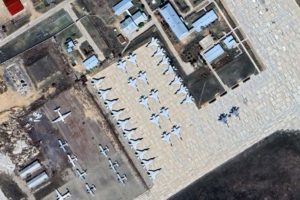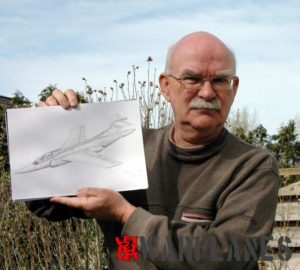Active Electronically Scanned Array
AESA (Active Electronically Scanned Array) radars offer improvements over previous technologies. They are more sensitive, have better operational “uptime” because moving parts are eliminated, and the failure of one module doesn’t take the entire radar off line. They are also far better at handling large numbers of targets.
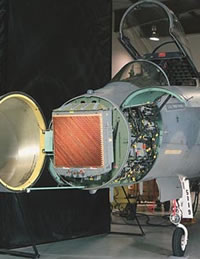
The problem with AESA radars has been cost, In July 2008, Raytheon produced a release regarding a variant technology called AESLA, an Active Electronically Scanned Lens Array radar. Their approach was aimed at improving the cost of AESA radar’s, a move that could have industry-wide significance if successful. AESLA builds upon some previous contracts involving higher performance Gallium Nitride circuitry, and also on some internally-funded research at Raytheon.
Manufacturing advances are beginning to make AESA radars a standard feature in the latest American fighter planes, and AWACS (airborne warning and control) surveillance aircraft. When one begins to contemplate their use in “national level assets” like ballistic missile defense, however, the size of the radars involved brings the AESA cost issue right back to the fore.
AESLA employs high-power transmit-receive radar modules, enabled by gallium nitride (GaN) monolithic microwave integrated circuits (MMICs) that pack more power and performance than conventional silicon-based electronics. The other important technology is a low-loss, reliable phase shifter employing radio frequency (RF) micro-electro-mechanical systems (MEMS) technology. MEM combines computational abilities with the perception and control capabilities of microsensors and microactuators, creating smart machines at a cost comparable to integrated circuits.
AESLA: Employment and Uses
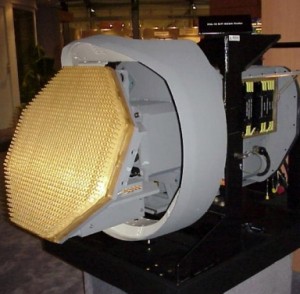
The nature of this approach does not make AESLA suitable for all radars at this point. Its sharing approach can be used at a number of levels, but it offers the most benefits with the largest land and sea based radars.
Reducing costs for these radars can still have important benefits. Similar, smaller systems can also be used to enhance theater defense projects like the THAAD missile or naval SM-3 – mobile technologies that have shown the most promise to date in dealing with the ballistic missile threat.
Another example of the technology’s possible uses was provided at the end of July, Ronald O’Rourke of the Congressional Research Service offered a brief that sketched out several shipbuilding options, including the option of a minimally-armed “radar ship” similar to the existing T-AGM-23 USNS Observation Island, aka. the “Cobra Judy” monitoring vessel. The proposed design would carry a larger radar than one would normally find on destroyers and cruisers. It would travel with key fleet groups and improve the entire battlegroup’s radar coverage against long-range aerial targets and ballistic missiles.
AESLA: Funding and Next Steps
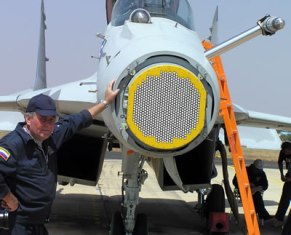
AESLA in currently a research effort led by the US Office of Naval Research (ONR). Raytheon is the contract recipient, and will perform almost all of the work involved through its Integrated Defense Systems unit, and its Space and Airborne Systems unit in Dallas, TX. The ONR’s contract with Raytheon is initially for $1 million, with a value of up to $14 million over about 4 years. While Raytheon spokespeople were reluctant to be pinned down, they did say that neither technology nor trained people would be a bottleneck for the AESLA effort. By the process of elimination, one may conclude that the current limit revolves more heavily around funding. Whether internally funded, or funded by the government, it may be that a higher priority effort would be able to deliver faster answers regarding AESLA’s viability, and bring its capabilities into service at an earlier date that the current implied schedule of 2014+.
Mick Gladwin

